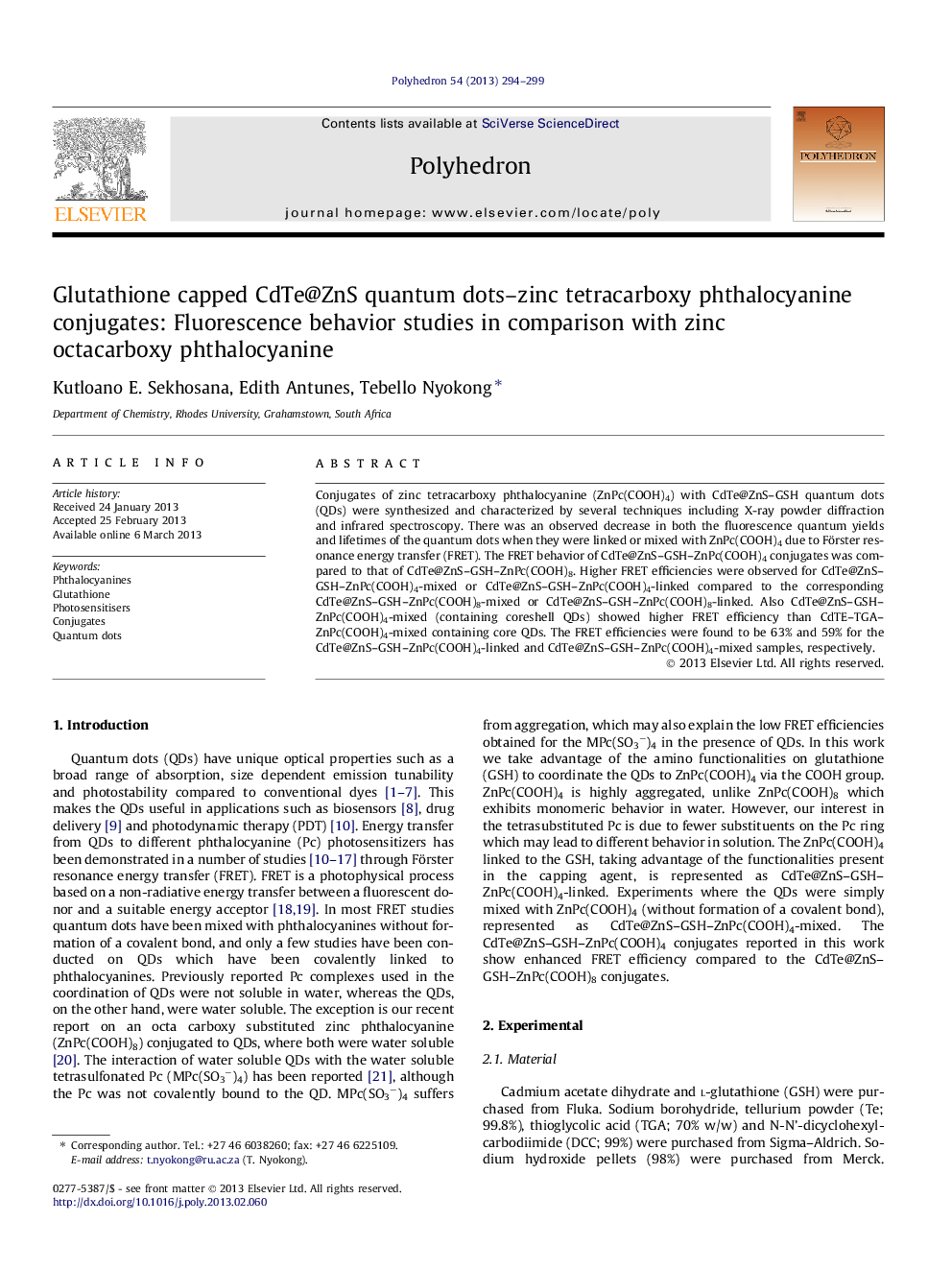| Article ID | Journal | Published Year | Pages | File Type |
|---|---|---|---|---|
| 1334609 | Polyhedron | 2013 | 6 Pages |
Conjugates of zinc tetracarboxy phthalocyanine (ZnPc(COOH)4) with CdTe@ZnS–GSH quantum dots (QDs) were synthesized and characterized by several techniques including X-ray powder diffraction and infrared spectroscopy. There was an observed decrease in both the fluorescence quantum yields and lifetimes of the quantum dots when they were linked or mixed with ZnPc(COOH)4 due to Förster resonance energy transfer (FRET). The FRET behavior of CdTe@ZnS–GSH–ZnPc(COOH)4 conjugates was compared to that of CdTe@ZnS–GSH–ZnPc(COOH)8. Higher FRET efficiencies were observed for CdTe@ZnS–GSH–ZnPc(COOH)4-mixed or CdTe@ZnS–GSH–ZnPc(COOH)4-linked compared to the corresponding CdTe@ZnS–GSH–ZnPc(COOH)8-mixed or CdTe@ZnS–GSH–ZnPc(COOH)8-linked. Also CdTe@ZnS–GSH–ZnPc(COOH)4-mixed (containing coreshell QDs) showed higher FRET efficiency than CdTE–TGA–ZnPc(COOH)4-mixed containing core QDs. The FRET efficiencies were found to be 63% and 59% for the CdTe@ZnS–GSH–ZnPc(COOH)4-linked and CdTe@ZnS–GSH–ZnPc(COOH)4-mixed samples, respectively.
Graphical abstractCdTe@ZnS quantum dots capped with glutathione (CdTe@ZnS–GSH) and covalently linked to zinc tetracarboxy phthalocyanine (ZnPc(COOH)4), showed higher efficiency of energy transfer than the octasubstituted derivative.Figure optionsDownload full-size imageDownload as PowerPoint slide
